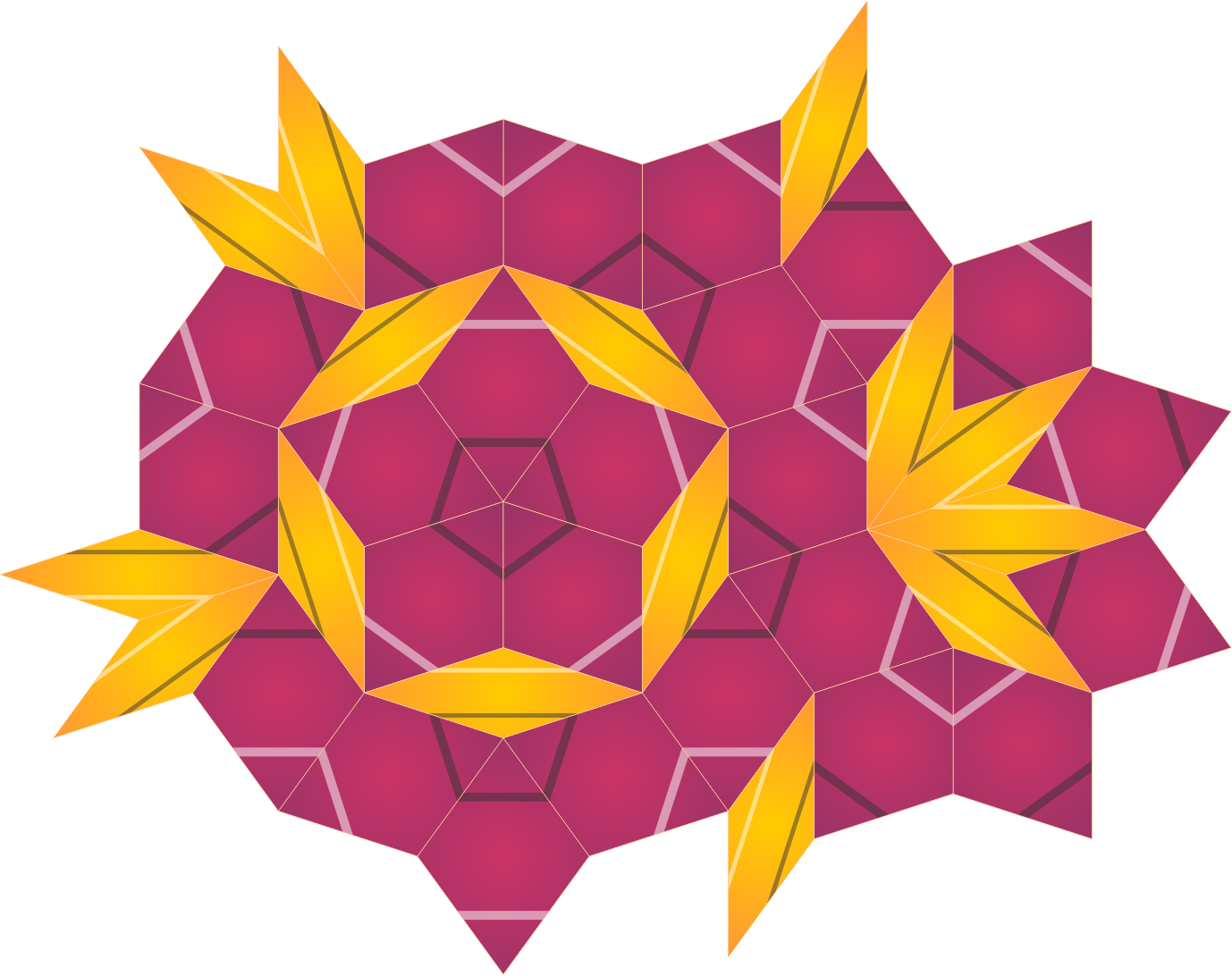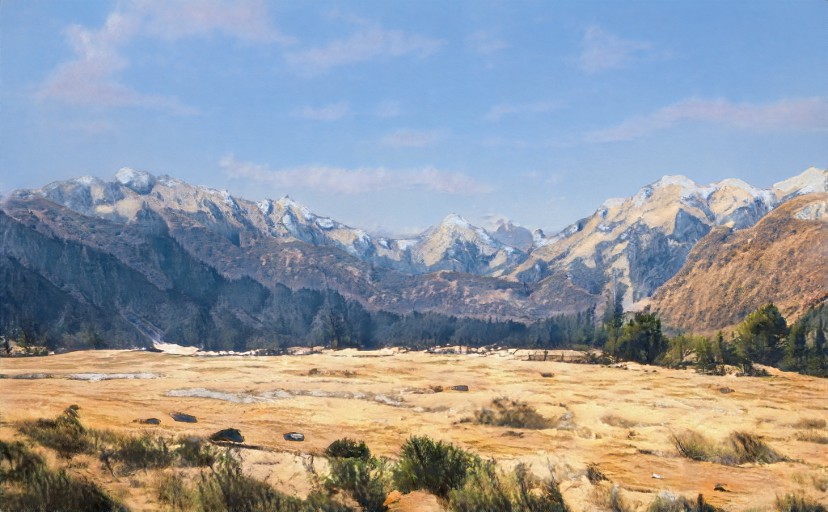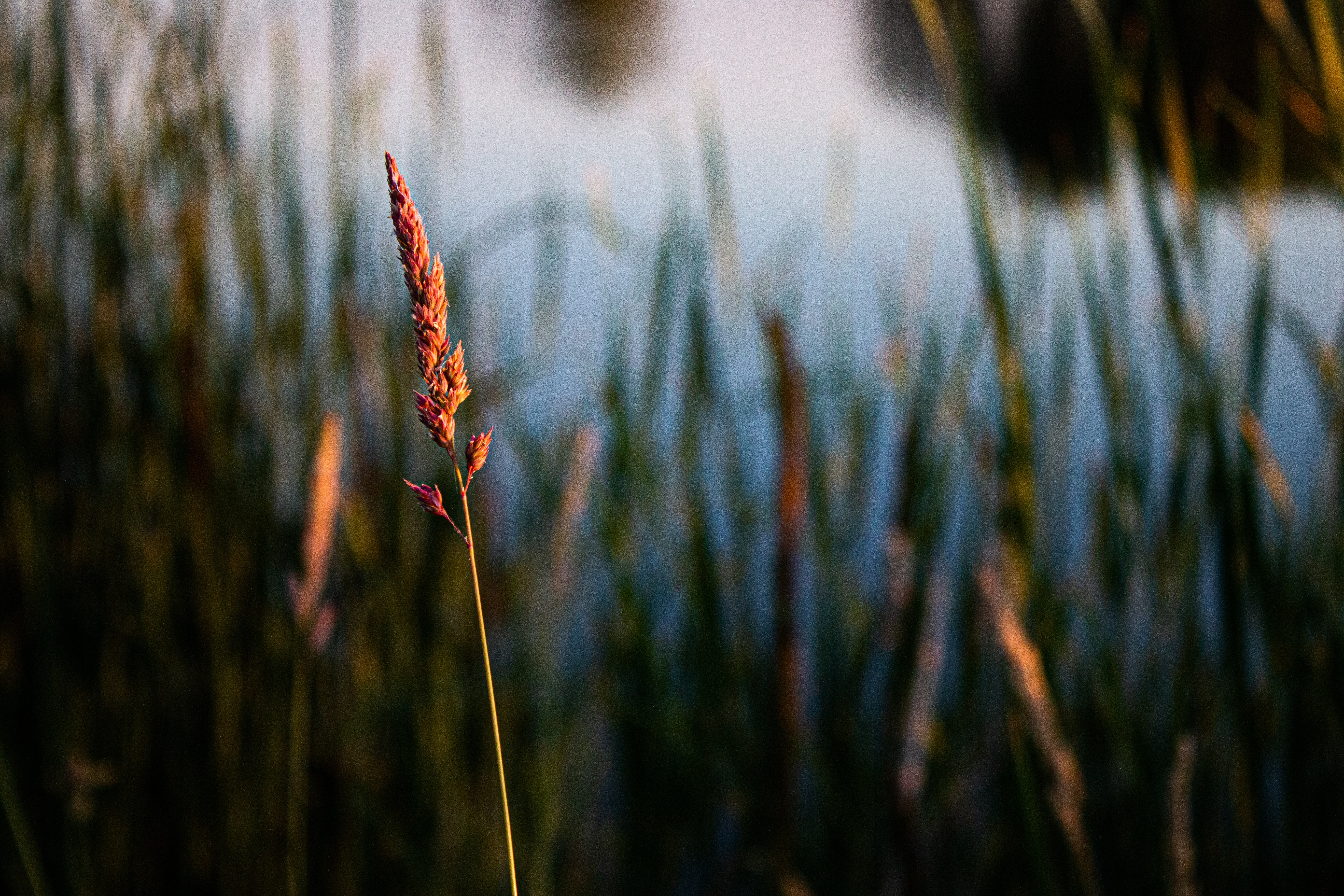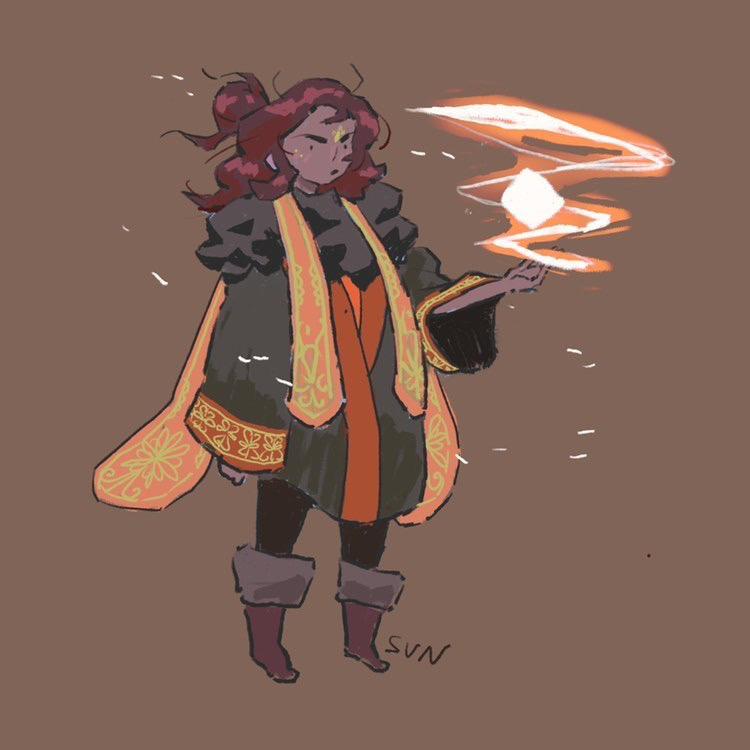Penrose fescue is a common, somewhat invasive species of dioecious evergreen grass in the
Manifold Sky setting. Despite its tendency to annoy farmers, gardeners, and lawn tenders, the species is crucial to arresting erosion in regions strongly affected by the
circumvective cycle.
Basic Information
When a given root network reaches full size (see Growth Rate & Stages), it grows a special reproductive tendril underground that stretches to where the center of a new colony should be.
The sex of a new colony is determined by whether or not the parent colony has been fertilized by airborne pollen from conspecifics. The distinction between sexes is not obvious from surface observation until the early spring pollen season, whereupon clumps of small, reddish flower buds open and male plants begin to shed pale pollen particles into the wind. A few months after pollen season, if growing conditions are poor, female plants release small, downy seeds into the air to propagate the species farther afield; otherwise, the plant multiplies underground as previously discussed.

by BCGR_Wurth
Penrose fescue is notable in that, in its mature form, the plant almost universally forms patch-like colonies which spread across the landscape in aperiodic tiling patterns. It is believed that this unique propensity for aperiodic tiling is a strategy evolved to prevent conspecifics from competing with one another for groud water and minerals.
During favorable growing conditions, an initial seed grows into a root network underground, which, after a time, sprout blade-like suckers which emulate the appearance of other common evergreen grasses. This root network takes the shape of a rhombus in one of two aspect ratios, with the ratio being determined by the gender of the patch; further root networks extend down, not horizontally, making old colonies extremely difficult to dig up.

by BCGR_Wurth
Chemical signals and nutrients are shared by adjacent patches, allowing each to 'know' how far it can grow before it would overlap into the growing region of an adjacent patch. These signals, combined with constrained paths for reproductive tendrils (see Genetics & Reproduction) are responsible for the Penrose fescue's unique aperiodic tiling across the landscape. This process of tiling can sometimes limit the ultimate boundaries of a given field of Penrose fescue, as a seed will never fully germinate if it's root network cannot occupy the space in which it has taken hold given the rules outlined above (i.e. in the region where two unrelated fields might overlap). A patch of Penrose fescue which cannot achieve its full size enters a stressed state, regardless of the presence of otherwise favorable growing conditions.
Penrose fescue grows and propagates about as quickly as other common grasses, though its evergreen nature and ability to store nutrients deep below ground allow it to continue growing even during periods of drought or cold weather that would kill seasonal grasses. This growth perseverance exacerbates the problems Penrose fescue presents to farmers attempting to grow food crops in affected areas.
Additional Information
Penrose fescue is both a blessing and a curse for surface agricultural endeavors. On the one hand, the grass is nutritious, evergreen, and easy to grow for animal grazing. On the other hand, particularly old fields can prevent any plants smaller than trees from growing in their territory, and particularly large fields are almost impossible to eradicate by non-mechanized means due to the plants' ability to share nutrients through root networks. The only place where Penrose fescue does not regularly force adjustments in agricultural practices is within the tightly-managed confines of an
agri-mine.
One useful aspect of Penrose fescue that is not commonly discussed is its ability to prevent soil erosion. The deep, interconnected root systems of old fescue patches trap large hunks of soil and, because such a field is capable of diffusing nutrients and other soil chemicals, the species is somewhat more resistant to changes in soil salinity or acidity than other similar species. This makes the plant especially important to the continued prosperity of regions with high winds, close proximity to coasts, or at the edges of
commissures - all conditions where soil and fresh water would otherwise quickly be lost to geological, hydrological, or meteorlogical processes. Rarely, Penrose fescue will be intentionally seeded in an area (such as in the courtyards and perimeter blocks of
Godshead Rock) to prevent erosion or desertification.
Penrose fescue is noted for being present on almost every
cube layer, though local conditions (such as the harsh light of the
Distal Tesseract) may slow its spread.
National-level organizations - such as the
Petalcap Vale Customs Authority and
Manifold Conservation Society Bureau of Agriculture - work to prevent the further spread of Penrose fescue within their territories. However, these efforts generally achieve only partial success, as the grass can always become stressed and begin spreading via airborne seeds to evade containment. The
War of Reunification leaves many regions of the
Medial Tesseract without a consistent government presence; the grass grows unrestricted in these places, lending Penrose fescue an unwholesome symbolic connection with death by violence.

by Artbreeder
While Penrose fescue does represent a risk to agriculture and forestry due to its ability to out-compete local plant life, the issue lacks the sense of visceral immediacy that something like brushfires would engender in a body politic. As a result, there is no multi-national agreement equivalent to the
Medial B Accords with regards to the containment of Penrose fescue patches or the prohibition on the intentional spread of its seeds as a form of 'agricultural warfare.' Even so, the intentional spread of Penrose fescue patches is rare in the extreme - an invading army detatchment (especially one comprised of
farm-jumpers) would vastly prefer to occupy an intentionally-laid field of more nutritious and easily-pickable crops, while agribusiness rivals understand that all it takes is a shift in wind to bring their own sabotage back upon themselves.
Lifespan
The maximum age of a clump of Penrose fescue is unknown, but known to be extremely long in the presence of good growing conditions.
Average Height
Penrose fescue blades can grow up to a foot high above ground and up to almost four feet deep below ground.
Culinary Uses
Ovinex, being the sapient descendants of ruminants, are capable of eating Penrose fescue without further preparation. Most Ovinex enjoy the taste of both fresh and dried Penrose fescue, the former often being used for salads and the latter for dry rations. Pastries made from the flour of stressed fescue seeds are something of a
Native Ovinex delicacy and are the best-selling products of bakers in the
Ovinex Island Tribes territories. These pastries are spoken of as 'cakes' by their Ovinex makers and eaters, but their savoriness and limited sweetness mean that most other species speak of them as 'bread.' This difference in taste comes about because the Ovinex, being of island extraction but having little in the way of a native sugar industry, are much more familiar with sea salt or ocean water as cooking ingredients than with sugar, honey, or molasses; a
Voxelian honey-blueberry cake produced by
Chateau Blueberry, for example, would be sickeningly sweet on the Ovinex palette. Certain varieties of apples, however, may be added as a compote to Penrose fescue cakes to satisfy a broader variety of tastes.
As particularly pernicious fields of Penrose fescue have sometimes infested wheat and barley fields - notably in the
Free Faces League and
Craterhold - attempts have increasingly been made to find a culinary use for the invasive species. Because the plant is often stressed in the dry
Medial C summers, airborne seeds are somewhat common during this time. Penrose Amber is a hazy red-orange beer made in in the
municipality of Craterhold environs with accumulated Penrose fescue seeds blended with wheat and hops, producing a bold, belly-filling brew that can sometimes serve as a substitute for a snack.
Penrose fescue greens, while edible, are not very palatable by
human or
verdial standards and are not generally eaten by these groups except in poverty conditions.















Firstly, yay for the use of 'pernicious'. Really interesting plant - I really like where you got the inspiration for it. The side bar about culinary uses is also really interesting. I like that the drink made with it can be used in place of a snack. :D
Explore Etrea | March of 31 Tales